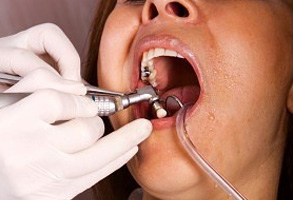
The International Indian Treaty Council and Consumers for Dental Choice filed a petition calling on the Assistant Secretary-Indian Affairs and the Secretary of Health and Human Services (who runs the Indian Health Service) to end the use of amalgam – a dental filling that is 50% mercury – in Indian Health Service Clinics and on Tribal lands.
“Mercury from dental amalgam and other sources has a profound effect upon traditional Native lifestyles, which value fish as an integral part of tribal culture,” says Andrea Carmen, Executive Director, International Indian Treaty Council.
In 2013, the U.S. signed the legally-binding Minamata Convention on Mercury, which requires the government to phase down dental amalgam use. The Convention specifically calls for “Discouraging insurance policies and programmes that favour dental amalgam use over mercury‑free dental restoration” and “Encouraging insurance policies and programmes that favour the use of quality alternatives to dental amalgam for dental restoration.”
Violating the government’s promise to phase down amalgam use, the U.S. Indian Health Service (IHS) continues to favor mercury fillings for American Indians. Dental amalgam is disproportionately used in racial minorities, including American Indians. A 2011 study published in the Journal of the American Dental Association found that dental amalgam is used for 73% of dental restorations in patients of “other” race (defined as American Indian/Alaska Native/Asian/Pacific Islander). Meanwhile, dental amalgam is used for only 51% of restorations in white patients (Makhiha et. al.2011). IHS’s continuing use of dental amalgam for American Indians contributes to separate-but-“equal” dental treatment – mercury fillings for American Indians, increasingly mercury-free fillings for everyone else.
IHS still uses amalgam in American Indian children even though the U.S. Food and Drug Administration (FDA) acknowledges that there is very little or no evidence that amalgam is safe for children and the unborn: “Very limited to no clinical information is available regarding long-term health outcomes in pregnant women and their developing fetuses, and children under the age of six, including infants who are breastfed.” In fact, FDA’s dental amalgam rule concedes that “The developing neurological systems in fetuses and young children may be more sensitive to the neurotoxic effects of mercury vapor.”
In a 2013 resolution, the National Congress of American Indians calls on the IHS to “phase down, then phase out on a timetable…the use of dental amalgam in IHS programs; favor the use of non-mercury alternatives to dental amalgam in IHS programs in the interim; and provide information to patients and parents regarding the impacts of mercury from [amalgam.]” There appears to be no response.